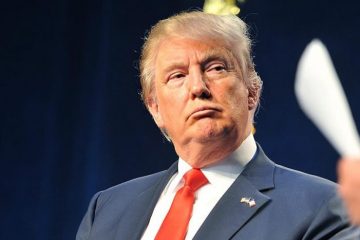U.S., North Korea have few channels by which to resolve crises

WASHINGTON (Reuters) – Washington and Moscow have over decades established mechanisms to prevent crises from spinning out of control, from hotlines to satellites and over-flights that allow the nuclear-armed adversaries to track each other’s military deployments.
No such safety nets exist between Washington and Pyongyang, worrying experts who say an accident, misstatement or erroneous reading by one side of the other’s actions could spiral into full-scale conflict even though neither side wants war.
Tensions between the two countries have risen markedly in the last few days after North Korea warned Washington of a “severe lesson” following U.N. action against it and U.S. President Donald Trump in turn warning that any threats to the United States from Pyongyang would be met with “fire and fury.”
Trump’s unexpected remarks prompted North Korea to respond by saying it was considering plans for a missile strike on the U.S. Pacific territory of Guam.
Experts said there are limited channels through which the two sides can try to exchange proposals to ease tensions over North Korea’s missile and nuclear weapons programs.
“We have some ad hoc and analogue ways of communicating with North Korea but we don’t have anything that has proven itself and can withstand the stress of crises,” said Jon Wolfsthal, a top non-proliferation adviser to former President Barack Obama.
The two sides have no diplomatic relations, so they have no embassies in each other’s capitals. They maintain contacts through their United Nations missions, their embassies in Beijing and meetings between military officers at Panmunjom, the location on the militarised frontier dividing the Korean Peninsula where the truce that stilled the 1950-53 Korean War was signed.
Washington also passes messages through Pyongyang’s ally and neighbour China, or Sweden, the U.S. protecting power in Pyongyang.
There was a hotline linking Seoul and Pyongyang, but North Korean leader Kim Jong Un severed the channel in 2013 and refused to restore it, said Gary Samore, a former senior White House adviser now with Harvard University’s Belfer Center for Science and International Affairs.
“You can’t handle this crisis through tweets and public statements,” said Joseph Cirincione, president of the Ploughshares Fund, an arms control group, referring to Trump’s penchant for using Twitter to deliver policy announcements.
It took years during the Cold War for Washington and Moscow to establish hotlines and develop protocols by which their presidents and top officials could verify that the person with whom they are in contact is who they say they are due to a lack of trust, Wolfsthal said.
“The challenge … was first how to establish direct contact, president to president, military to military, and then how to make sure they would be reliable, safe and secure in the case of a conflict,” he said. “How would they verify the identities of people? This is something we took a long, hard slog at for decades.”
These protocols are still in use and have become arguably more important in an era of cyberwarfare. Washington and Moscow have also established newer channels. For instance, they use a ‘deconfliction channel’ in Syria where they are both conducting military operations to ensure they do not come into conflict.
Even so, there were incidents during the Cold War that brought Washington and Moscow close to the brink of war mainly because of early warning system glitches, said Lisbeth Grolund of the Union of Concerned Scientists, an arms control organisation.
“In one case, in the Soviet Union, they got a warning that an attack was underway. Everything looked real, but the person on the scene there decided to disobey orders and not tell his boss,” she said. “And it was a good thing because it was not an attack. Their satellite had seen a reflection off of the clouds.”

